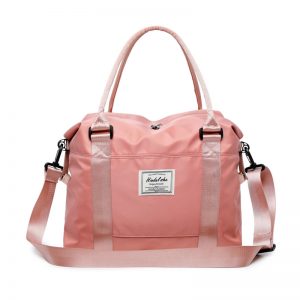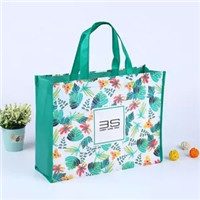Tote bag, as the name implies, is a bag that is used to hold items and is easy to carry. Its load-bearing function determines its material and form. According to the materials used, it can be roughly divided into paper handbags, plastic bags, cloth bags, small baskets and small baskets. The most common and frequently used ones should be paper composite bags and plastic bags, followed by cloth bags. Small baskets and small baskets are rare in large cities.
paper tote bag
paper handbags are mostly made of heavy kraft paper, white cardboard, gray-bottom white cardboard, white-bottom white cardboard and copper cardboard, which are printed, die-cut, glued and formed by offset printing machines. Due to the modernization of printing and equipment, printing patterns are beautiful, delicate, and rich in forms of expression, the craftsmanship in modern printing can be expressed on a small handbag, such as hot stamping, concave-convex, UV, die-cutting, etc.
Due to the difference in materials, the stiffness and toughness of kraft paper are better, and the surface is relatively rough, and it has a background color. It is generally not suitable for 4-color printing. It only does some single-color printing and does not need to be coated on the surface. The production cost is Around 1.5 yuan (folio). Pay attention to the use of good quality glue when bonding the kraft paper handbags, otherwise the bottom and the mouth will burst. At the same time, kraft paper handbags have been placed for too long and degummed. White cardboard, white cardboard with gray background, white cardboard with white background and copper cardboard all have a common feature. The surface is delicate and all are white. They are suitable for 4-color printing and can print beautiful patterns. Due to the toughness and toughness of the paper itself. Because of the characteristics of fear of water, the surface is usually covered with a film after printing (BOPP film, also called biaxially oriented polypropylene film, and such paper bags are called paper-plastic composite bags) to increase its toughness and water resistance. The handbags after film treatment generally do not appear degumming. The production cost is 1.3~2.0 yuan. The cost of copper cardboard handbags is high, followed by white cardboard handbags, gray-bottomed white cardboard handbags, and white-bottomed white cardboard handbags.
Plastic bag
plastic bag
Plastic bags are divided into ordinary plastic bags and biodegradable plastic bags according to the materials used. Generally, the thickness of plastic shopping bags provided by farmers’ markets is about 0.005 mm, while the thickness of plastic shopping bags provided by cities and shopping malls is generally between 0.015 mm and 0.020 mm. At present, the thickness of 80 plastic shopping bags in the market cannot reach the limit of 0.025 mm. After the plastic limit, the city and shopping malls have paid for the use of plastic shopping bags, and some shopping malls use biodegradable plastic bags.
Cloth bag
cloth bag
cloth bags can be divided into woven fabrics and non-woven fabrics according to whether the materials used need to be woven. Textile cloth is divided into plant fiber cloth and chemical fiber cloth and blended cloth; non-woven cloth is usually called non-woven cloth, English name is NonWoven, which is a kind of non-woven cloth, which is directly made of polymer chips, short fibers or filaments. The fibers are formed into a web through airflow or mechanically, and then reinforced by hydroentanglement, needle punching or hot rolling, and then finished to form a non-woven fabric. It has a new type of soft and breathable fiber product. The advantage is that it does not produce fiber debris, is strong, and It is silky soft and has a cotton feel. Compared with cotton fabrics, non-woven bags are easy to shape and cheaper to manufacture.
Textile bags are mostly made of cotton, canvas, polyester-cotton cloth, Oxford cloth and other materials. The surface of these cloths is rough and cannot be directly fine-printed. Silk screen printing or transfer printing is often used. At the same time, due to the high price of raw materials, the handbags produced are also more expensive.
Small basket
small baskets and small baskets
Small baskets and small baskets are mostly made of bamboo, wood, and rattan. They are sturdy, usually handicrafts, expensive, not portable, and the output and usage are not large.































